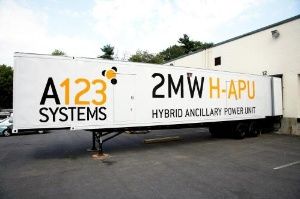
By Tom Bartley (6/1/11). An analysis by Megawatt Storage Farms set the 2020 statewide need at 4,000 Megawatts of energy storage. This 4 GW didn’t take into account the projected extra 10% grid energy load caused by forecasted charging of electric cars. To put this in perspective, 4,000 MW is almost the SDG&E peak demand on a hot summer day where 2,000 MW is the import transmission capacity. As an example, Sempra already recognizes the need for energy storage by adding 12 MW of energy storage to the 21 MW wind farm it recently purchased on Maui, HI. If you are reading carefully you will have noticed that these numbers are power not energy. Typical projects call for sustaining the power level for 15 minutes to 4 hours depending on the primary purpose of the storage; with pumped-hydro energy storage, the time could be longer.
The 2020 target for renewable energy in California is 33%. Cal ISO (the California Interconnect System Operator) along with the three dominant IOUs (Investor Owned Utilities); PG&E, Southern California Edison, and SDG&E, have been having heartburn caused by high anxiety over grid stability at that high a level of intermittent non-dispatchable power. Traditional solutions of adding spinning reserve and peaker plants requires long lead times and is expensive both in the purchase price and the operation. These traditional approaches still lack the needed instantaneous response.
Government subsidies and regulation is already involved in the business of energy storage. Last year, September 29, 2010, the governor signed into law AB2514 that requires the Public Utilities Commission (PUC) to have hearings and set procurement targets for any load-serving entity to procure viable and cost effective energy storage systems. The first target is by the end of 2015 and the second is by the end of 2020. The federal Storage 2010 Act of requested $1.5Billion in tax credits for energy storage added to the US Electric Grid. California Energy Commission (CEC) is spending $30million in grant funding for demonstration projects of renewable energy and energy storage.
For anybody who would like to sort out this business I highly recommend attending STORAGE WEEK 2011 by Infocast, July 11 -14, 2011, Rancho Bernardo Inn, San Diego, CA. This is the fourth edition of this annual event and the previous three were sold out. I was fortunate to attend the last two years. “Market rules are changing… Global markets are heating up… Storage costs are dropping.”
Fleet operators will soon look at the payback of a short-range electric vehicle fleet powered by their own renewable energy and energy storage system. On the vehicle side, no oil or oil filter changes and brakes last up to 8 times as long. On the fuel side, imagine a wind and/or solar system at a fleet facility that grabs the energy when and where it’s available with an energy storage system that gives it to you when you want it and does not restrict your time of recharging or hit you for middle of the summer day “demand” charges. If the utility accesses 10% of a fleet’s energy storage system for voltage and frequency regulation, they could wind up paying you for the service. A good understanding of the products, applications, players, and rules of engagement will provide a competitive edge to future electric vehicle fleets.
CEC Energy Storage Presentations
